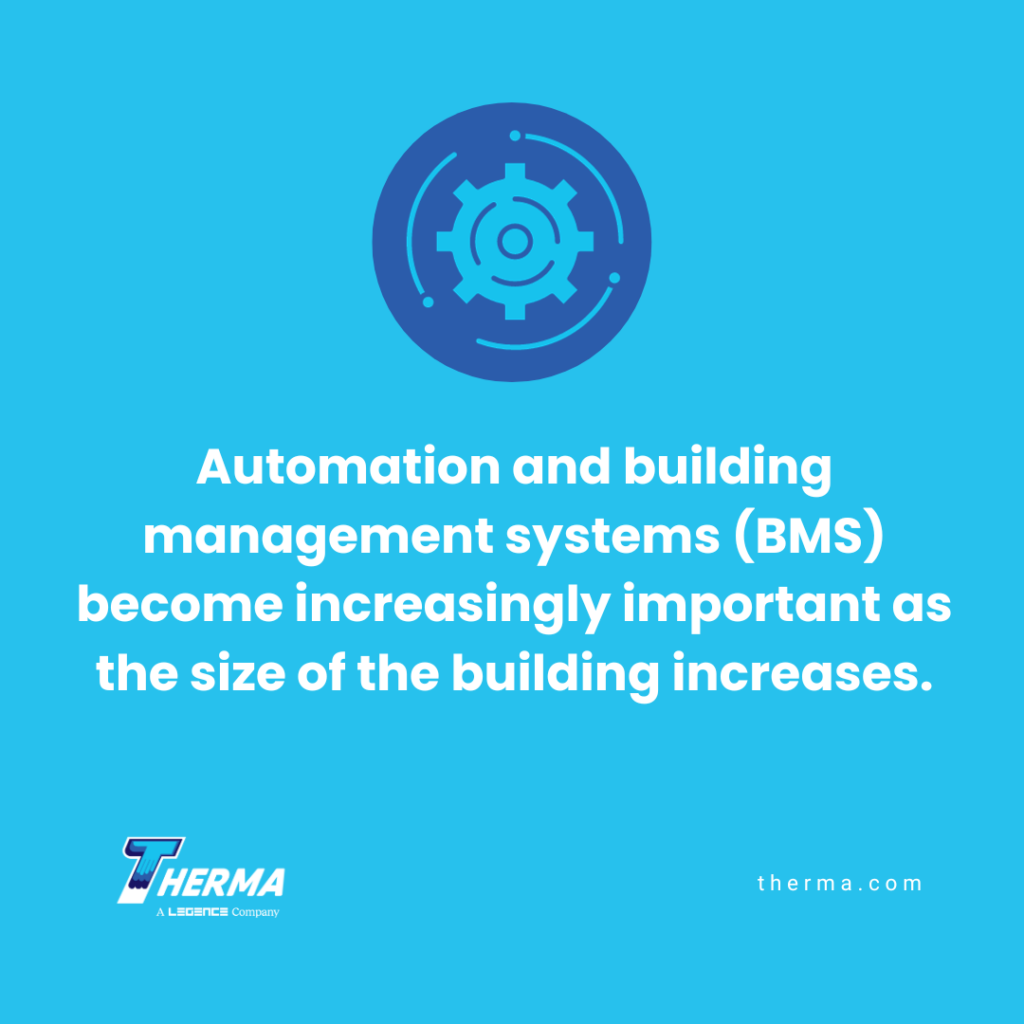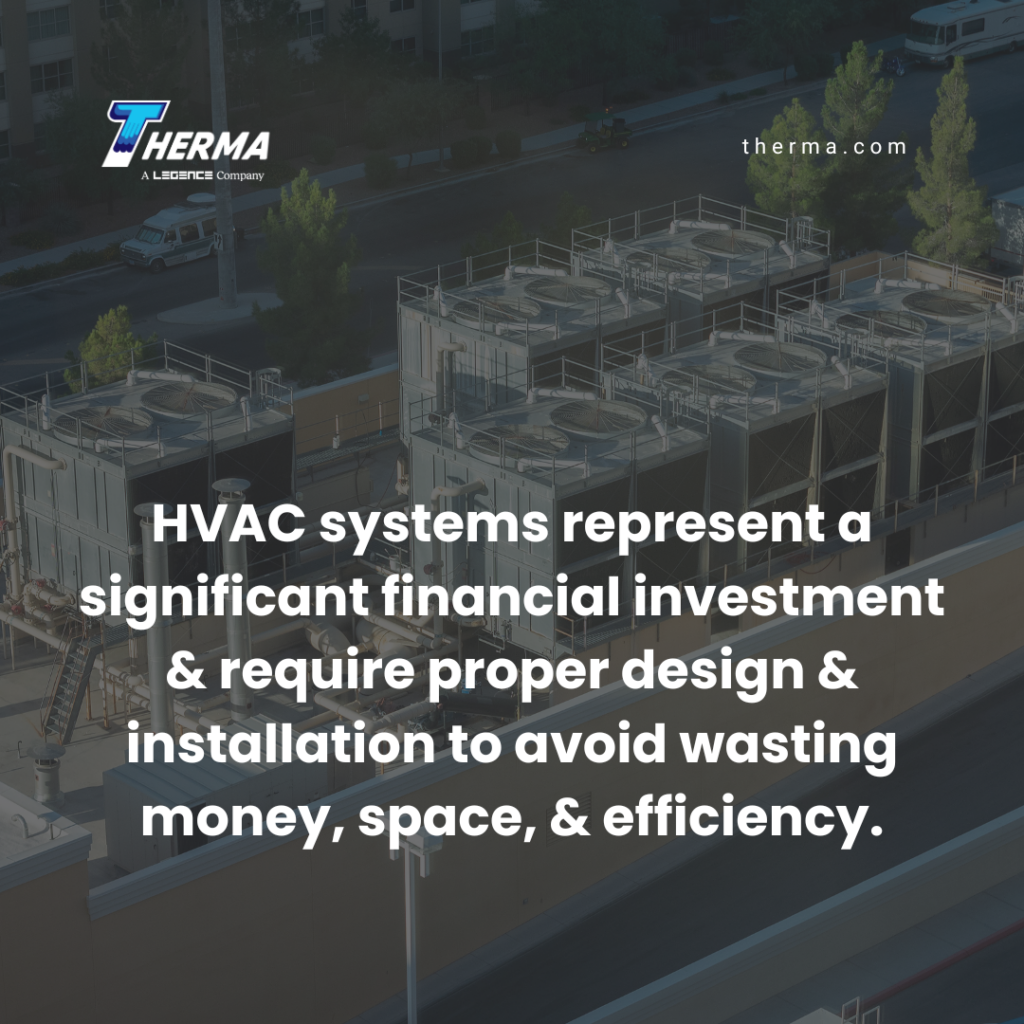by Patti Dees
Large commercial HVAC system designs present unique challenges because of the building’s size and any special-use areas within them. Discussing the factors that impact large HVAC design projects early in the design process can reduce waste and optimize efficiency and maintenance.
Early Engagement Saves Money
Large HVAC systems represent a significant financial investment and require proper design and installation to avoid wasting money, space, and efficiency. The system must meet the needs and expectations of various stakeholders, from owners and maintenance staff to occupants. Input from stakeholders can help identify factors such as codes and standards, special-use requirements, limitations, and priorities to include in the design.
HVAC system designs of all sizes need to follow municipal building codes to avoid fines or delays. For facilities aiming for sustainability certification, additional guidelines apply. Communicating goals to contractors and design staff early in the design process ensures these items can be accomplished while still falling within necessary standards.
Prioritize Special Features
Special-use areas need to be discussed with design staff. Depending on how the area is to be used, features such as additional ventilation or separate heating and cooling units may need to be included. For instance, lab hoods need ventilation systems that are not connected to the main room ventilation system. Similarly, designs may need to include a single-split unit to control the temperature in a server room while the remainder of the spaces can be covered by multi-split or variable refrigerant flow (VRF) units.
Technology for Efficiency
Efficiency is usually high on the list for modern HVAC designs. However, mechanical efficiency is not the only kind to aim for. Larger HVAC systems require a great deal of maintenance to avoid wasting energy and staying at optimal efficiency.
Automation and building management systems (BMS) become increasingly important as the size of the building increases. A BMS helps keep track of work completed, and scheduled maintenance and can be set up to monitor specific equipment. Automation can reduce the workload on technicians and occupants. It can also limit the impact of human error by keeping equipment running consistently based on performance ranges or other mechanical requirements.
Equipment Footprint and Room to Move
The physical footprint of the necessary equipment is a common limitation that factors into large HVAC designs. Retrofit designs may be constrained to current floorplans, which are likely to be less than ideal. Design teams will need to focus on creative or innovative options. Examples include using chilled beams with integrated lighting or adjusting duct sizing to reduce noise.
When designing large HVAC systems for new construction, stakeholders should consider how much space is required for mechanical rooms, ductwork, and any system redundancies that the building needs. Staff need to be able to easily reach equipment, but they also need room to perform maintenance or operation tasks. However, including more space also increases the workload on the system. The design should balance ease of access for maintenance and operation against the possibility of wasting space.

Factors that impact large HVAC system designs should be addressed early and revisited periodically during the process. Paying attention to goals and special requirements early helps avoid paying for changes later. Whether the project is designed for a retrofit in an existing building or for new construction, contact Therma’s HVAC design team to discuss your next large commercial project.
Patti draws on her background as a chemical engineer to share information with readers on technology, manufacturing, and construction.
Sources
Compressors Unlimited – How HVAC Systems Work in Large Buildings | Compressors Unlimited
Consulting-Specifying Engineer – HVAC design considerations and solutions for unique university spaces | Consulting – Specifying Engineer
Whole Building Design Guide – High-Performance HVAC | WBDG








